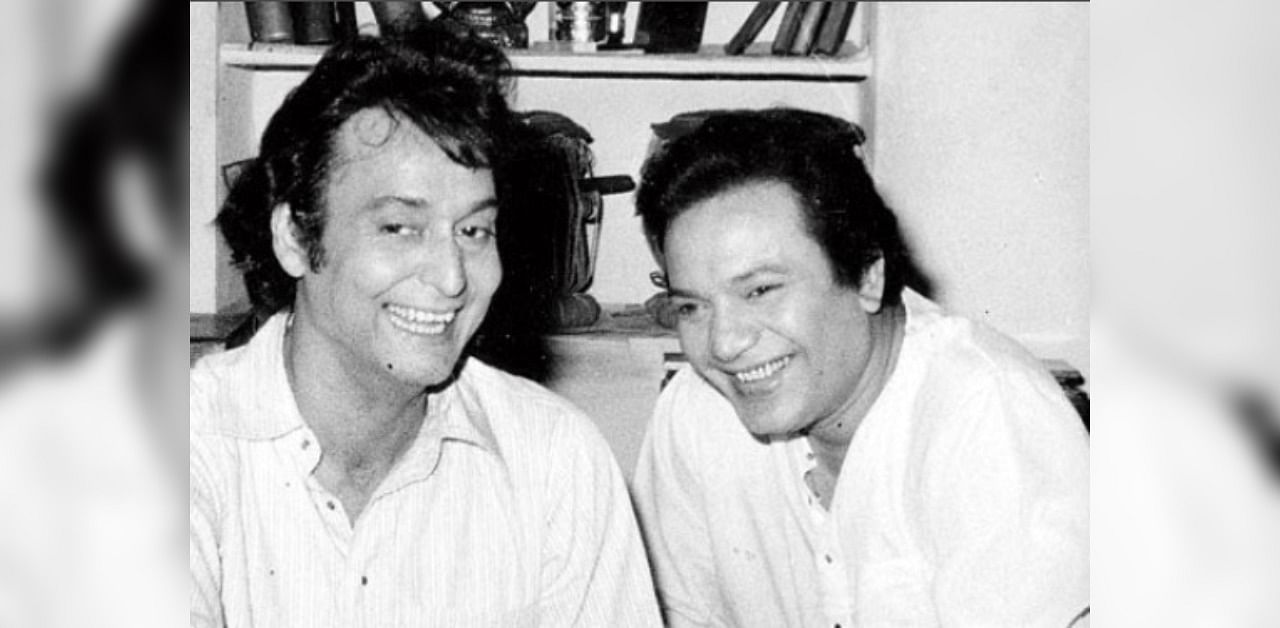
"Soumitra Chatterjee or Uttam Kumar?"
Somewhere in Bengal, a Bengali is asked to declare his identity and prove the Bengaliness of the soul.
This question is one of the few litmus tests that a Bengali faces in his or her lifetime. Maybe one can argue that it is on par with the 'East Bengal or Mohun Bagan' and 'Satyajit Ray or Ritwik Ghatak' dilemmas, choices that have shaped the conscience and culture of an entire race.
As the news of Soumitra Chatterjee's death broke, people dived deep into pools of nostalgia and began to unearth their fondest memories of the actor. Soumitra, for almost six decades, shaped the filmography of Bengal and most importantly, acted as a balm for an ethnic group suffering from existential angst after the loss of its glory days. And while portraying the Bengali ethos on the silver screen, he was up against arguably the greatest superstar the Bengali film industry has ever seen: Uttam Kumar.
He was the suave charismatic hero. He was the dream of every woman and the aspiration of every man. Uttam Kumar was what the people of post-partition Bengal wanted to be: A sophisticated elite with a disarmingly beautiful aura and a plethora of luxuries. From portraying the role of a son in a rich family and the lover with an enchanting smile to a struggling singer and a driver in pursuit of his lady-love, Kumar switched characters like a chameleon, like a wizard who always has a new trick up his sleeve to woo the audience. He acted as an escape route for Bengalis who lived a cherished life with the actor. The 'Mahanayak' ruled the celluloid, dictated the discourse of Tollywood (as Bengal's film industry is popularly known) and became the sun amidst a galaxy of stars: Brighter, warmer and most loved.
It was the year 1959. A young bearded man tore pages that contained his poetry and flung them in the air. He has just lost his wife and his son is living in his maternal home. He is wandering in the forests and the hills to understand the true meaning of life. And finally, when he realises the essence of happiness, he decides to bring back his son. The child's initial sense of apprehension on seeing his father gives way to delight and the film concludes on a happy note. As the audience watched the dramatic tale of Satyajit Ray's Apur Sansar unfold on the silver screen, they fell in love with the bearded actor. Soumitra Chatterjee had arrived, and suddenly, the aura of Uttam Kumar was flickering.
Soumitra was nothing like Uttam. He did not have the charisma of the latter. He was more of an intellectual, a cerebrally polished but unkempt youth who dreamt about the arts and their artists. He never became Uttam's 'son of a rich businessman' or the hero who personifies romance. Instead, Soumitra became the embodiment of an educated generation struggling to earn a living in a chaotic world. The society was ravaged by joblessness, poverty and overpopulation, a land where the natives and the refugee migrants struggled to carve out a home for themselves. Soumitra represented the 'thinking man', a class that embraces Western ideas without forsaking Indian values, a community that's aware of revolutionary artistic works in faraway countries and struggles to produce a hybrid of Occidentalism and Orientalism. And so, the intellectuals developed a love for Soumitra since his beginning in Bengali cinema and that would continue for the next six decades.
Uttam Kumar and Soumitra Chatterjee clashed on the silver screen and both had moments of glory. Notably, in Jhinder Bondi (1961), directed by Tapan Sinha, Soumitra played the role of Mayurvahan, an antagonist against Uttam Kumar's Shankar Singh and later Gauri Shankar Roy. That Soumitra would essay a negative role was met with apprehension as it was a domain outside his comfort zone. He, however, came through with flying colours and even, one might argue, outshone Uttam at times. The film, to date, remains one of the brightest examples of their duel.
Among the other films they were in, Stree (1972), directed by Salil Dutta, remains a standout example of the magic that their clash produced. Uttam played the role of an anti-hero as opposed to Soumitra's character of a simple man from the village. In revenge for their earlier bout, Uttam gained the upper hand in the acting department by quite some distance. It should also be mentioned that the two of them acted in Dilip Roy's Devdas in 1979. Though the film was a disaster, Soumitra's depiction of the titular character faded in comparison with Uttam's cameo role of Chunilal.
Uttam Kumar and Soumitra Chatterjee defined two different narratives in the history of Bengali films. They differed in style, approach, mannerisms and even dialogue delivery. They diverged in the kind of classes they represented and competed with each other for the affection of masses, for the throne of the supreme star. Beyond all the disagreements and disputes, the two have one thing in common: Both left a rich legacy for the cinematic audience to cherish, for Bengalis to be proud of and for future generations to admire. In the end, it is only the binary of the two behemoths that have made the Tollywood industry a whole.
Rest in peace, Soumitra Chatterjee (1935-2020).